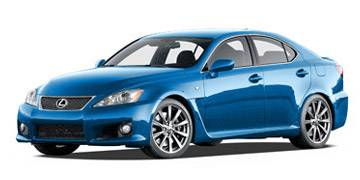
Help others by writing a review

Added: 12th of October 2016
My sixteen year old Lexus IS 200 is the most reliable car I have ever owned and continues to give great day to day service at all times.
Added: 12th of October 2016
Not the best performance cheap to run but all round a good car for the money
Added: 12th of October 2016
Lexus still lives up to an excellent reputation. Although I am a person that believes "unless it is broke - no need to replace it", this is not always right when talking about cars, but the comfort and safety of the IS sports saloons combined with their attention to detail even though the age would suggest it has been left behind, results in a invigorating performance and dynamic driving pleasure. I have been very pleased with this car and it still gives us pleasure.
Added: 11th of October 2016
An excellent car utterly reliable. No expense since I bought it.but very well maintained.
Added: 11th of October 2016
A very good car, that served me well. Rear seating space is slightly compact for size of car but still comfortable.
Added: 11th of October 2016
easily the best car I have had and I have had BMWs
Added: 11th of October 2016
220000 miles and still going strong! I've had my IS200 for 12 years, thought about getting a new one but just can't seem to let it go. Excellent car!! Would recommend lexus to anyone!
Added: 29th of September 2016
All the normal Lexus extras and comfort. A beautiful car to drive.
Added: 28th of September 2016
I am very satisfied with my Lexus and would recommend it to anyone who desires a luxury car without the concerns of repairs as it is a very reliable car.
Added: 24th of September 2016
This at is an excellent looking and handling car. The vehicle is so quite and luxurious inside.
Added: 23rd of July 2015
Viewed this car on Saturday and immediately decided to purchase. Collected on Tuesday so only had for 48 hours. Lovely car to drive. Very comfortable. Spacious light and airy. Cant comment on fuel economy/mpg yet as not had long enough. Some nice touches eg heated and air conditioned leather seats, parking assist (front & rear) CD autochanger. Never driven or been in a Lexus before and must say I'm very impressed and would definitely recommend.
Added: 18th of November 2013
I used to own a Chrysler Crossfire but got so fed up with it getting stuck in snowy conditions that I decided to get something a bit more 'grown up' and decided that it must not be rear wheel drive again...and then I test drove the IS250 and fell in love! It's super, very comfortable, good performance, lovely gadgets including a snow button which is supposed to give extra traction, but I still get stuck. The joys of rear wheel drive I guess. So, excluding the month or so of poor weather it's great - lovely looking and a joy to drive!
Added: 17th of November 2013
My IS200 is attractive, completely reliable, and satisfactory in every way EXCEPT for fuel consumption (25mpg),and cost of servicing - although that is only annually and first rate. As my mileage is modest since retirement, that is a good compromise.
Added: 17th of November 2013
Comfort is downgraded as the car is a Sports Version with hard suspension. A very, very reliable car. One headlight bulb is all I have replaced. Oil consumption is virtually zero. Petrol about 25-30 mpg dependant on journey length. Miles run is just under 70.000.
Added: 17th of November 2013
I like my Lexus but the road tax payable is too much. I cannot understand why the engine emissions are rated higher than any other make of car of the same age. This is a major consideration in changing my car
Added: 16th of November 2013
a great car is the lexus , I dont do many miles so a yearly service is sufficient . Lexus pick and deliver is very good as I live about 10mls from my nearest dealer.My car is kept in my garage attached to the house I live in , it has NEVER not started at the first attempt . Roasd tax is high due to petrol engine but low yearly milage is a big offset .
Added: 15th of November 2013
Good car. Lousy gearbox porr fuel consupmtion.
Added: 14th of October 2013
Beautifully made - high quality is apparent throughout. Extremely quiet and comfortable. Excellent handling. Ride quality is good but not outstanding. So far (500 miles) averaging 42 mpg on short local trips and around town, 44 mpg on long motorway trips, 51 mpg on cross country trip via A and B roads. Car is much better equipped than BMW, Mercedes, Audis at the same price. Dealer service excellent during purchasing experience: I had four prolonged test drives to ensure I was happy with my choice.
Added: 13th of October 2013
Best value car I have ever owned
Added: 13th of October 2013
Although a bit juicy, everything works brilliantly. Never let me down, not had any unexpected repairs to make. Frequent trips to Europe an absolute joy especially on the autobahn.
